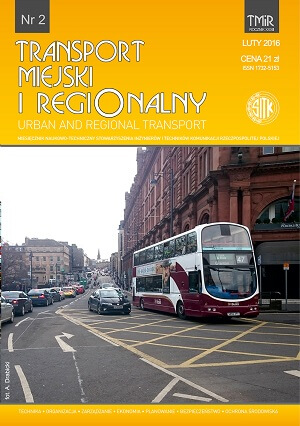 Katarzyna Nosal: The rules for creating mobility plans for facilities and areas generating large traffic flows
Katarzyna Nosal: The rules for creating mobility plans for facilities and areas generating large traffic flows
Abstract: Large companies, shopping malls, hospitals, schools and separate areas of the city such as residential, industrial or business areas generate a large traffic volume, including trips made by a car. The consequences of this traffic include congestion, air pollution, noise, accidents, problems with parking – burdensome for employees, customers, students and residents of the areas. The implementation of the mobility plans can contribute to reduction of these problems. Mobility plans are used to change the transport behaviors towards reducing trips made by a car. The plans are implemented abroad on a large scale but in Poland they are still very innovative, rarely used measures. In order to popularize the knowledge of their realization the concept of the mobility plans, typical facilities and areas of implementation and benefits of their usage were presented in this article.
To show the process of the implementation the rules and the different phases of the project together with the actions necessary to be taken at each step were described. Key factors that may affect the implementation of successful mobility plan and the role of the local authorities in their promotion were highlighted.
Sławomir Goliszek: Changes in the accessibility of public transport in Kielce – study on the impact of funds of the EU financial perspective 2014-2020
Abstract: The article shows how the accessibility of railway/bus station in Kielce will be changed as a result of contribution from the EU funds of the 2014-2020 financial perspective. It is assumed that the funds from the EU will be the main stimulus for changes in the public transport journey times. Analysis of changes in accessibility is presented in two periods. The first date is 2013 illustrates accessibility before key investments financed from the financial perspective of the 2014-2020 are implemented. The second date is 2020: by this time according to the author planned infrastructure investments that improve functioning of public transport in Kielce are to be completed. The analysis of changes in the accessibility of public transport in Kielce are based on the infrastructure investments which are in two expertise’s for cities of Eastern Poland. The main objective of the article is to verify if funds from the EU perspective for 2014-2020, intended to improve the functioning of public transport in Kielce will be effective. Results of the analysis will be presented on: surface changes present isochrones, arrival time, number of people and population density of isochrones in 2013 and 2020.
Czesław Wolek: Analysis of the tram’s speed in the city center
Abstract: Automotive ratio in Poland in 2012 exceeded the average value which amounts to 484 cars / 1000 inhabitants in the European Union. In the existing situation we must strive to reduce the availability of the central areas in large cities for the individual cars, in favor of alternative means of transport at the stage of realization of land use planning and policy of mobility. In terms of mobility policy, it is proposed to increase the share of walking and cycling in urban travel and interest in the use of vehicles such as: car-pooling and car-sharing with the simultaneous implementation of solutions resulting in an increase of public transport’s attractiveness. An important factor in the attractiveness of public transport is journey’ time which is directly related to the transport speed. The analysis of trams’ exploitation parameters has been presented in the paper. The author used the example of tram line segments with a length of about 4 km, located on the outskirts of downtown cities of Poznań, Warsaw and Wrocław. The structure of travel time based on : time of run, time wasted and time of passengers’ exchange was presented in the graphical form. In addition, research on technical speed, transport speed and duration of the exchange passengers have been analyzed. The article shows that the average value of wasted time is up to 25% of travel time. This means that with proper implementation of solutions giving the priority for a tram, it is possible to reduce travel time by 25%, which will ensure effective competition of public transport’s means in relation to the car in urban conditions.
Arkadiusz Drabicki, Piotr Ostaszewski, Krystian Siwek: The concept of trial implementation of yellow box junctions
Abstract: The purpose of this article is to introduce a new system of road markings and road signs, designed to reinforce further the existing Highway Code rules, and to prevent the unwanted driver behaviour – namely, situations where some drivers enter the junction area although their exit road is not clear, and consequently block other (conflicting) traffic streams, preventing them from moving across the junction. The presented solution corresponds to a well-known system of yellow box junctions, widely used in a number of countries, notably in Spain and the United Kingdom. The trial implementation of yellow boxes could take place on the busiest signalised intersections within the city of Cracow – where the authors have already conducted initial surveys and field observations. Two possible variants of implementing the yellow (red) box junctions (basic and extended case) are hereby presented and it is concluded that both of them could comprise a beneficial solution – mainly in terms of improving the intersection capacity, the road traffic safety and reducing the unnecessary time delays – especially on the busy inner-city junctions during the rush hours. Further analyses (and future test trials) would enable us to study the efficiency of the described solution more detailed.













